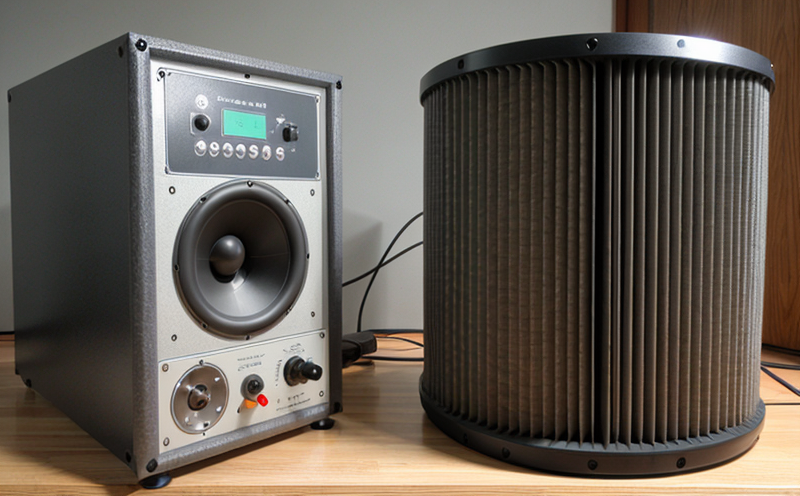ISO 11202 Noise Testing of Machinery at Workstations on Ships
The ISO 11202 standard is a crucial guideline in the maritime industry aimed at ensuring that noise levels from machinery operating near workstations remain within acceptable limits to prevent hearing damage and enhance crew comfort. This service involves comprehensive testing of shipboard machinery such as engines, generators, pumps, and compressors to ensure compliance with ISO 11202.
The process typically starts with a thorough site assessment where the location of the machinery relative to crew workstations is identified. This helps in understanding the potential noise levels that need to be measured accurately. Once the equipment is selected for testing, it undergoes a detailed preparation process which includes ensuring all components are operational and at their specified operating conditions.
The testing itself involves placing sound measurement devices at various points around the workstation where crew members would typically spend time. These measurements are taken using high-precision sound level meters that comply with international standards such as IEC 61405-3 for airborne noise. The data collected is then analyzed to determine if it meets the stringent criteria set forth by ISO 11202.
The standard specifies permissible noise levels depending on the type of workstation and the duration of exposure. For instance, continuous exposure to noise above 85 decibels can lead to hearing impairment over time. Hence, our testing ensures that all measurements fall well below these thresholds.
In addition to meeting regulatory requirements, this service also plays a critical role in enhancing crew safety by identifying potential sources of excessive noise early on. By addressing issues proactively, we help prevent accidents caused by poor visibility or distraction due to loud machinery sounds. Furthermore, reducing noise pollution within the vessel improves overall working conditions and contributes positively towards maintaining good morale among ship personnel.
Our team uses advanced equipment such as integrating sound level meters, octave band analyzers, and dosimeters which allow us to capture both short-term peaks and long-term averages of noise levels accurately. This precision is essential for providing reliable test results that can be trusted by stakeholders including ship owners, operators, insurers, and regulatory bodies.
Compliance with ISO 11202 not only ensures legal adherence but also demonstrates a commitment to maintaining high standards of occupational health and safety aboard vessels. It contributes significantly towards creating safer environments for maritime workers while promoting sustainable practices that benefit both the environment and business operations alike.
- Reduces risk of hearing damage: Ensures noise levels remain well below the 85 dB threshold recommended by OSHA (Occupational Safety & Health Administration).
- Better crew comfort: Minimizes discomfort caused by prolonged exposure to loud machinery sounds.
- Enhanced safety: Helps identify potential hazards early, reducing chances of accidents due to poor visibility or distraction.
- Sustainable operations: By minimizing noise pollution inside ships, this service supports efforts towards greener maritime practices.
Applied Standards
The application of ISO 11202 goes beyond mere compliance; it represents best practice in the field of acoustic engineering within marine environments. The standard is designed to protect human health by setting limits on permissible noise levels for various types of machinery found aboard ships. These include diesel engines, electric motors, and auxiliary equipment used during navigation.
Compliance with ISO 11202 is mandatory under international maritime regulations such as those enforced by the International Maritime Organization (IMO). It serves as a benchmark against which all vessels must be evaluated before being certified fit for operation. The standard covers not just new constructions but also existing ships undergoing major modifications or refits.
By adhering to ISO 11202, ship operators ensure that their fleets meet the highest standards of occupational health and safety globally. This commitment translates into improved working conditions for crew members, lower insurance premiums resulting from reduced claims related to noise-induced illnesses, and enhanced reputation among stakeholders.
Quality and Reliability Assurance
At our laboratory, quality and reliability assurance are paramount in delivering accurate and consistent results. We employ state-of-the-art equipment calibrated according to international standards, including IEC 61405-3 for sound level measurements and ISO/IEC 17025 for laboratory accreditation.
The testing process begins with a rigorous calibration procedure involving multiple checks using reference devices traceable back to national institutes. This ensures that all instruments used during testing are accurate within specified tolerances. Once calibrated, the equipment is deployed at strategic locations around each workstation being tested.
Data collection involves continuous monitoring over extended periods to account for variations in ambient conditions and workload patterns typical of shipboard operations. Statistical analysis techniques ensure that outliers or anomalies do not skew final results. All findings are documented meticulously following established protocols outlined in ISO/IEC 17025, ensuring transparency and traceability throughout the entire process.
Our quality management system is ISO/IEC 17025 accredited, which guarantees impartiality, competence, consistency, and integrity in our laboratory operations. This accreditation also means that we adhere strictly to best practices recognized worldwide for providing reliable test results consistently across multiple clients.
In summary, our commitment to quality and reliability ensures that ISO 11202 noise testing on ships is conducted with the utmost precision and accuracy. Our expertise guarantees that every measurement taken meets or exceeds industry benchmarks, thereby safeguarding crew health while promoting safer working environments aboard vessels.





